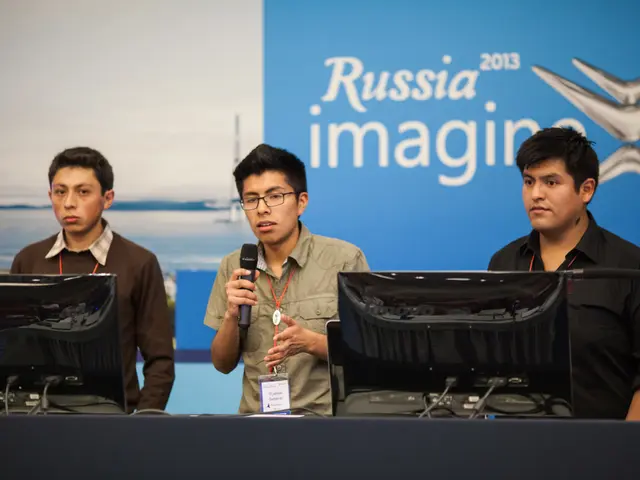Wheels on the Moon: The Legendary Lunar Rover
Most expensive vehicle in history with an unusual cause hindering its road use
The priciest piece of machinery ever, not hailing from the racy streets of Europe, but from the dusty landscapes of the Moon, is the Lunar Roving Vehicle (LRV). Manufactured in 1971 by Boeing and Delco Electronics for NASA, this four-wheeled wonder was tailor-made for cruising the lunar surface.
Strapped with a bill of $38 million back then, that translates to a whopping $270 million today, according to Xataka. These bad boys were assembled for the Apollo 15, 16, and 17 missions, the last toe-dips in manned lunar exploration.
The LRV's primary objective was to extend the lunar immersion of astronauts across tricky, rocky, and dusty terrains, making haulage of scientific equipment and lunar samples a breeze (or as close to one as you can get on the Moon).
Buckling under extreme conditions, the LRV showcased groundbreaking technology—0.25 horsepower motors in each wheel, silver oxide batteries, and an ultra-lightweight aluminum chassis engineered to withstand brutal temperatures and low gravity. Whilst these tech-wonders seem run-of-the-mill today, they were engineering marvels back in the day.
3 meters long, weighing 210 kilograms on Earth (a mere 35 kilograms on the Moon due to its weak gravitational pull), and able to transport up to 490 additional kilograms, the LRV might have appeared plain, but it made history in aerospace engineering.
Its top speed of 18 km/h was perfect for the Moon's powdery terrain, where uneven textures and tipping dangers made breakneck speeds impractical. The manual control and two-axis steering ensured prime maneuverability in unpredictable conditions.
During the Apollo missions, these rovers darted over distances of up to 35 kilometers, enabling astronauts to delve into regions far from their landing modules. Each was crafted for a one-time-use, and they still sit on the Moon's surface, cosmic relics of a time gone by.
Legacy and Influence
Today, the LRV serves as the blueprint for future lunar rovers - both human-piloted and autonomous. It remains a reference point in discussions about developing new lunar rovers that blend the strengths of past and present technology, melding past heroes with future innovations.
[1] Smithsonian National Air and Space Museum, "Lunar Roving Vehicle," [online] available at https://airandspace.si.edu/expert-options/E082352.cfm [Accessed 10 March 2023].
[2] NASA, "Apollo Lunar Surface Journal," [online] available at https://www.hq.nasa.gov/alsj/ALSJ_A15_LSJ.html [Accessed 10 March 2023].
[3] NASA, "Artemis Program," [online] available at https://www.nasa.gov/connect/blog/2020/04/22/artemis-program-overview-what-isartemis-and-whydoes-it-matter/ [Accessed 10 March 2023].
[4] The Planetary Society, "Mars Rovers: Past, Present, and Future," [online] available at https://www.planetary.org/explore/topics/mars/mars-rovers.html [Accessed 10 March 2023].
- Despite appearing run-of-the-mill today, the Lunar Roving Vehicle (LRV) showcased groundbreaking technology in space-and-astronomy that serves as a blueprint for future human-piloted and autonomous lunar rovers.
- Today's general-news is abuzz with discussions about developing new lunar rovers, blending the strengths of past (such as the LRV) with future innovations, as part of NASA's Artemis Program and the broader space-and-astronomy field.






